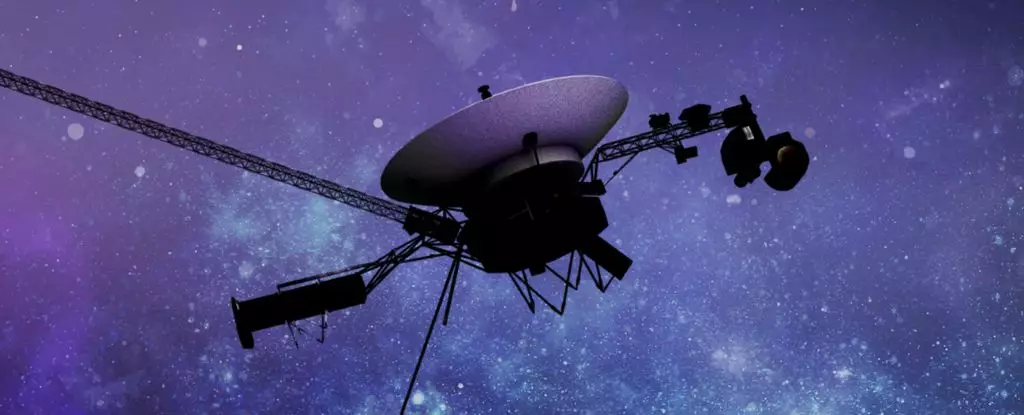In an astonishing turn of events last month, NASA found itself grappling with communications issues emanating from Voyager 1, the farthest human-made object in existence, which is now traversing the depths of interstellar space. As Voyager 1 reestablished contact, it did so through a transmitter that had not been used in over four decades, raising questions about the durability and functionality of this venerable spacecraft amidst the cosmic void.
The ordeal began on October 16, when a seemingly innocuous command logged by mission control aimed to activate one of Voyager 1’s heaters. What followed was a bewildering episode where the spacecraft ceased communication with Earth, leading NASA engineers to scratch their heads over the sudden silence. This delay in recognition—two full days—underscores the challenges of maintaining contact with a craft so profoundly distant, positioned nearly 25 billion kilometers away. With signals taking almost 23 hours to make the journey one way, every communication could take up to 46 hours to validate.
On October 18, Voyager 1 failed to respond at the expected time, propelling NASA’s Deep Space Network (DSN) into action. Engineers scoured through myriad frequencies before finally intercepting a faint signal—except it wasn’t the usual X-band transmission but rather indicative of a fault protection maneuver. When the heater was activated, Voyager 1’s internal systems detected an overcurrent which triggered a defensive protocol, automatically shutting down its primary communication system to conserve energy.
This built-in mechanism is crucial, given the energy constraints imposed by the aging power supply of the spacecraft. However, Voyager’s switch to the S-band communications system—a less powerful and consequently weaker signal—raised alarm bells. The last time Voyager 1 had used this transmitter was in 1981, when it was significantly closer to Earth. NASA’s team feared they might have lost the ability to detect signals from the probe if it remained on this lower-bandwidth transmission, which compounded the challenge of diagnosing the problems under such distance and uncertainty.
Thanks to the dedication of the DSN engineers, contact was eventually reestablished with the S-band transmitter on October 22, confirming that the auxiliary system was still operational. While this was undoubtedly a relief, the engineers opted against immediately reactivating the X-band transmitter until they comprehensively understood the underlying issue. The specter of prolonged silence hung over the mission team as they endeavored to unravel whatever had caused the initial failure.
The Voyager probes, launched nearly half a century ago, are witnessing a steady decline in operational capabilities. Even prior to this incident, Voyager 1 had experienced a slew of technical difficulties. A previously encountered glitch in 2022, which led to garbled telemetry data for months, highlighted the fragility of systems designed long before the advent of modern spacefaring technologies. This ongoing wear and tear evoke a reminder that, although remarkable, these exploratory crafts are not immune to the ravages of time and distance.
As the Voyager probes venture further into regions of space where no other human-made object has traveled, they encounter incredible phenomena that yield unprecedented insights into our universe. Yet, as engineers work diligently to troubleshoot current problems, there’s an overarching acknowledgment that these missions are finite. Decreasing power reserves indicate that scientific data collection will cease around 2025, while by 2036, both crafts are projected to drift beyond the reach of the DSN—signaling the likely termination of communication.
In the grand scheme of cosmological existence, the Voyager probes are on a trajectory to exit the Oort Cloud—a location theorized to envelop our solar system—over the course of tens of thousands of years. Eventually, they will pass within two light-years of neighboring stars, akin to celestial ambassadors carrying remnants of human culture. These tiny titans of ingenuity will exist for eons in the stark, unyielding wilderness of space.
The Voyager saga is not merely a narrative of exploration; it is a testimony to human resilience and innovation. Each technical challenge—be it a communication blackout or a temporary data fumble—carries with it a relentless pursuit of knowledge and an unwavering commitment to technological stewardship. Despite the hurdles Voyager 1 continues to face, its ongoing mission symbolizes humanity’s undying curiosity about the universe, lighting the way for future generations to follow in its majestic wake.


Leave a Reply